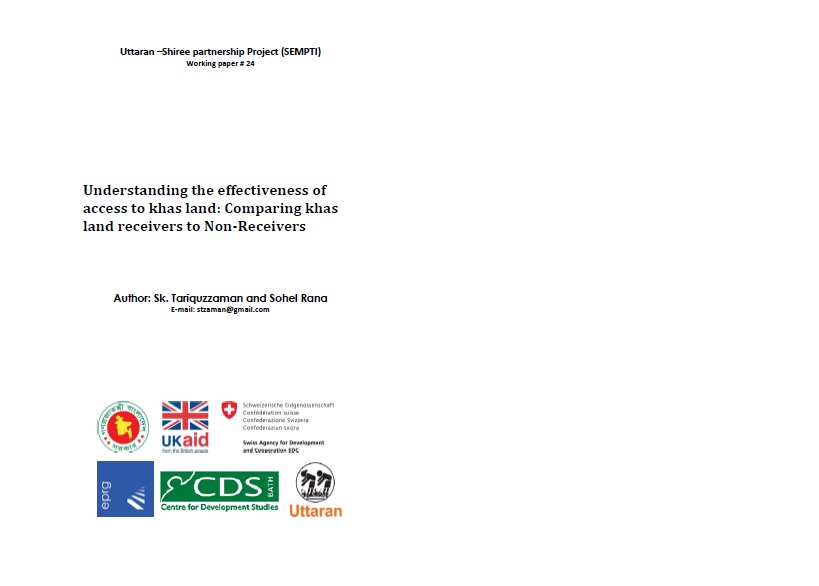This study highlights that access to khasland is a strongly political process where the collective movement played a pivotal role in shaping the livelihoods of land receivers. The paper shows that 1. khasland provides insurance and security through creating diverse income opportunities which can often mitigate the negative and long term impacts of shocks and allow khasland receivers to cope better with shocks 2. khasland allocation incentivises women’s engagement with labouring activities, household asset management, as well as their mobility within the village 3. Livelihood comparisons between khasland receivers and non receivers of khasland show that the income diversification effect of khasland and the potential for women to contribute to the household’s income gives household beneficiaries the opportunity to save 4. The norm of landless has changed. Now the father of a girl at daanga (highland) wants to marry off his daughter, which was previously unheard of 5. Being a landholder has changed their identity opening them up to the benefits of the market 6. Using one large piece of land has changed the structure of the market. They are the key market players as suppliers 7. Social setbacks may still have implications for retaining khasland. Though bhumihin (landless) leaders’ contributions are undeniable, they have a controversial role which is creating social insecurity to some extent. However, the leaders are negotiating with the external institutions and personnel to solve their community problems. So, by following a similar process and organizing a community movement to get the landless access to khasland, similar benefits may be realized.
Understanding the effectiveness of access to khas land: Comparing khas land receivers to Non-Receivers


